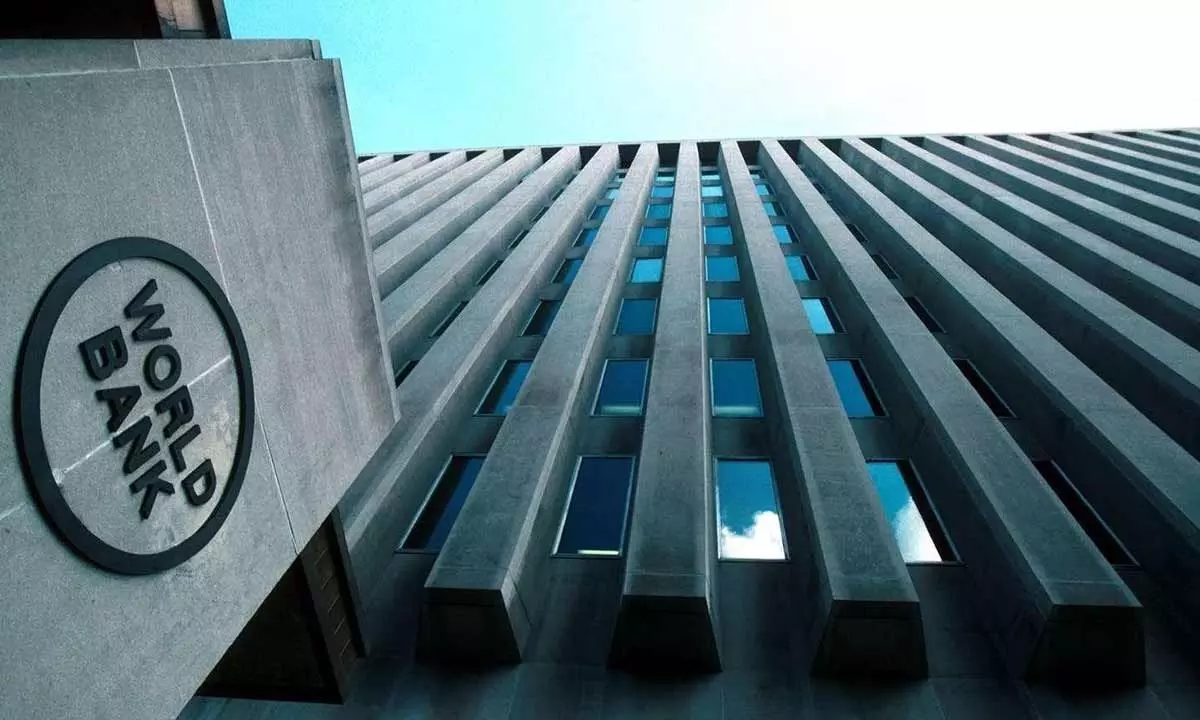World Bank and ADB foresee slowdown in Indian economy

World Bank and ADB foresee slowdown in Indian economy
Multilateral financing institutions are revisiting their growth projections for India in fiscal 2024, highlighting their perceptions that the economy is headed for a slowdown.
Multilateral financing institutions are revisiting their growth projections for India in fiscal 2024, highlighting their perceptions that the economy is headed for a slowdown. The World Bank has revised its forecast from 6.6 per cent while the International Monetary Fund (IMF) had earlier brought down its expectations from 6.8 to 6.1 per cent. The Asian Development Bank has mirrored their views by altering its prediction for the year from 7.2 to 6.4 per cent.
Clearly the outlook for the Indian economy is not looking as bright as it was at the beginning of 2023. This is largely due to external headwinds in the form of the unending Ukraine war, the unabated monetary tightening by central banks around the world and volatility in oil prices. In addition, there are fears of a global banking crisis in the wake of the Silicon Valley Bank failure and the takeover of flagship Swiss bank, Credit Suisse.
While making its revised forecast, the World Bank has commended India for its resilience but also pointed out the slowing consumption growth and challenging external conditions. According to its estimates, private consumption growth will decline in the current fiscal to 6.9 per cent from 8.7 per cent in the previous year. Government consumption is also expected to contract by 1.1 per cent. At the same time, it is of the view that if the push on investment, especially in infrastructure, gains momentum, it could offset this moderation in domestic consumption demand.
Bank officials have also suggested deepening of reforms to aid private sector investment though several of these issues have already been highlighted in the past. This includes making it easier for companies to list and delist in the stock markets as well as labour market reforms. In the latter case, some headway has been made but issues relating to a social safety net for workers have to be resolved before undertaking major initiatives.
ADB officials, on the other hand, highlighted the strengths of the Indian economy compared to its peer economies. Releasing the revised estimates, they lauded the government's commitment to fiscal prudence while budgeting higher capital investment in the current financial year.
Geopolitical tensions, however, were cited by these financial institutions as likely to have an impact on growth. There is no doubt that this is already engaging policymakers, who are keeping a watch on the external environment and the ripple effects on the Indian economy.
The Ukraine war, which does not seem to have an endgame as yet, is bound to have prolonged repercussions on world economies over the course of this year. India cannot be immune even though it has so far been fairly resilient despite the multiple effects of the conflict. The war's fallout is the impact of sanctions imposed by western countries on Russia. This has forced India to revive its longstanding rupee trade arrangement with that country. In addition, it has begun the process of entering into rupee trade with a whole host of other countries. Though rupee accounts have been set up in 18 countries so far, the most significant development is the latest agreement to trade in rupees with Malaysia which is being considered a test case.
Another factor for slowing down the pace of economic growth in the current fiscal could be the continuation of monetary tightening policies in central banks around the world. The inflationary pressures resulting from supply chain disruptions following the outbreak of the Ukraine war led to aggressive moves to hike interest rates.
The U.S. Federal Reserve has signalled that it is likely to continue on this path despite the impact on the country's banking system in recent months. In case the Fed continues on the path, other central banks are likely to follow suit. Though, Reserve Bank of India has hit the pause button on rate hikes, any further increases could affect the pace of growth in the economy.
The volatility in oil prices is yet another hurdle in the way of higher growth over the next 12 months. For a country that imports 85 per cent of its crude oil needs, the sudden dip in oil prices last month had come as a bonanza.
In the wake of the Silicon Valley Bank collapse, prices fell within ten days from 86 to 73 dollars per barrel. The situation has changed yet again recently as the oil cartel, OPEC, decided to cut production quotas of its member countrieseven further. It announced a cut of 1.16 million barrels per day, bringing the total volume of cuts by the cartel along with Russia and its allies to 3.66 million barrels per day. The result has been a sudden hardening of world prices, which are now ruling at around 84 dollars per barrel.
The hike in world oil prices is bound to push up the country's oil import bill, which had touched $200 billion in fiscal 2023.
It is thus evident that the downward revision of the growth rate for the current fiscal by multilateral financial institutions is based on external headwinds that are likely to slow down economic recovery. India will probably still be the fastest growing economy in the world even during 2023-24., but it will take a while before it can overcome the impact of geopolitical developments.















